The Commercial Horticulture Program provides multidimensional research-based information, support services, and training to a growing horticulture industry across Alabama. This includes the nursery and landscape industry and specialty crop producers using conventional or organic production systems.
Team Goals: The Alabama Extension Commercial Horticulture Team conducts responsive (commodity- specific) and planned programs. Overall team objectives are (1) to provide continuous training to specialty crop and nursery producers in agricultural innovations and research-based solutions using field demonstrations and high-quality publications; (2) to prevent catastrophic crop failure on small and large farms via rapid response to critical needs; and (3) to network with external collaborators and to grow and support the commercial horticulture industry
Commitment to Diversity, Equity & Inclusion (DEI)
The Commercial Horticulture Team offers in-person services, online events, and printed and digital educational resources freely to everyone without bias. This has led to a wide diversity of clientele and trust among communities.
Audience: About 26% of beginning farmers in the program are in underserved communities, including Alabama’s Black Belt; 5% are veterans. Program resources are also available to students with disabilities (collaboration with teachers at the Alabama Institute for Deaf and Blind in Talladega).
Technique for Reaching Audience: We have made special efforts to reach a diverse audience via mentor farmer networks and BFRD events in community centers. These events are trusted by participants and community leaders. Alabama Extension offices are also open to farmers for copying educational materials or for accessing the Internet.
Several other program marketing videos are available on the Alabama Extension YouTube channel. Search Alabama Beginning Farmer. You can also access these videos through the Farming Basics mobile app.
Commercial Horticulture Resources
- Traditional Media
- Handbooks
- Technical Publications
- IPM Slide Charts
- New Media
- E-Newsletters
- Farming Basics Online Course
- Social Media
- Multilingual Website
- Farming Basics Mobile App
- On-Farm Services
- Technical Consultations
- On-Farm Training
Team Resources Available at Alabamabeginningfarmer.com
- Farming Basics mobile app for crop and IPM information, connecting to REAs, videos, social media channels, and more.
- Farming Basics online course
- Commercial horticulture monthly webinars, Q&A Fridays, virtual farm tours via Facebook
- Alabama IPM Communicator/Beginning Farmer e-newsletter
- Print and digital books: Southeastern U.S. Vegetable Production Handbook, High Tunnel Crop Production Handbook for Beginners, IPM slide chart
- Alabama Extension Commercial Horticulture Facebook page
- Alabama Vegetable IPM Facebook page
- YouTube videos on Beginning Farmer playlist
- Social media events such as monthly webinar series, and Alabama Virtual Farm Tours on Commercial Horticulture Extension channel on Facebook
Alabama Beginning Farmer Program
Background: Funded by the USDA Beginning Farmers and Ranchers Development Program (BFRDP), the Alabama Department of Agriculture and Industries Block Grants (ADAI-SCBG), and the Sustainable Agriculture Research and Education (SARE) programs. Operation Grow provides hands-on training and grassroots networking opportunities to beginning farmers, with special emphasis on underserved communities and military veterans. This is one of the flagship programs for the Alabama Extension Commercial Horticulture Team. Many technical assistance providers help amplify program effectiveness in all corners of the state.
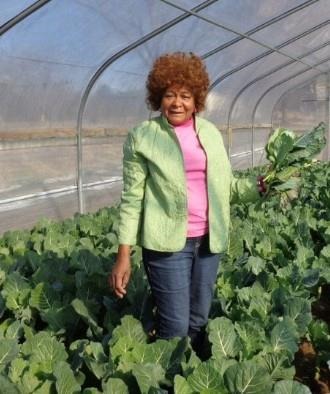
Collaborators: Alabama Fruit and Vegetable Growers Association, Alabama Sustainable Agriculture Network, Southern Sustainable Agriculture Working Group, Farmscape Solutions, Crotovina, Inc., The United Christian Community Association
Number of Direct Participants: 319 producers through the COVID-19 pandemic years
Evaluation Techniques: On-farm interviews, event surveys, learning assessments, e-survey, telephonic impact surveys
Value of Business Consultancy: $144,000
Beginning Farmer Success Rate: 70%
Adoption Rate for Recommendations: 90%
Website hits (2020): 8,875 for www.alabamabeginningfarmer.com; 1,160 for 2020 virtual events archive blog
Farming Basics Phone App: Installations: iOS = 3,200 Android = 1,100
Farming Basics Online Course: 1,500 students; 423 active students
Evaluation Data
- 1,335 Direct participants, 68 Online events
- 35,387 People reached
- 5,589 Engagements (170 Questions answered)
- 4,071 Followers (77% Increase)
- 47% Male 50% Female 3% Other
- 84% White 7% Black 7% Asian 2% Others
- 94% Usefulness of information 25% New audience
- 22% Beginning farmers 10% Experienced farmers
- 40+ Farm magazine articles by team members
- 60+ On-demand mailing of publications
- $50,000+ Gain from 125 client reports
Return on Investment: 10:1
- Farming Basics Online Course
- 1,412 Students
- 21% Completion Rate
- 97 % Satisfaction Rating with immediate use of information
- 4 CEUs from the American Agronomy Society and the American Horticulture Society
- 2,000 per year – Southeastern US Vegetable Crop Handbook*
- 5,000 total circulation – High Tunnel Crop Production Handbook*
- 18,250 total circulation – Organic Vegetable IPM Slide Chart*
- 7,000 total circulation – Urban Farm/ Market Garden IPM Toolkit*
- 500 – Citrus IPM Field Guide
- Alabama IPM Communicator E-newsletter
- 3,343 subscribers*
- 13,200 Email clicks*
- 4,772 – Social Media Subscribers
- 1,000+ Installations – Farming Basics Mobile App
*Communication award winners from the National Association of County Agricultural Agents, American Horticulture Society, and Southern Region IPM Center
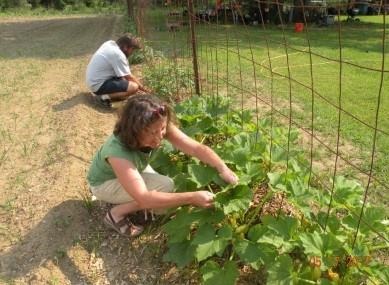
Alabama IPM/Sustainable AG E-Newsletter Impacts
This grant-funded activity is supported by USDA-NIFA SARE, BFRD, CPPM, and ADAI Specialty Crops Block Grants.
Background: The commercial specialty crop industry is worth $161 million with $103 million in value-added agriculture. Without research and educational support, yield losses and crop contamination on small farms can be as high as 55% in a short time. To communicate pest migration and outbreaks along with other rapid research updates, the Alabama Integrated Pest Management (IPM)/Sustainable AG e-newsletter has been published continuously since 2010 using Mailchimp and archived on the Alabama Extension website at aces.edu.
Outputs: The e-newsletter, which is published 24 times a year (2 issues per month), has 3,400 subscribers. Subscription growth rate is 25% with more than 10,000 email views (emails read). Reading/click rate of emails reaches 25% (summertime) when pest migration is at its peak and crops are at the greatest risk.
Satisfaction: 94% of respondents are satisfied with the quality of the newsletter
Improvements from Newsletter: 13 respondents averaged 24% yield improvement and 8 cases of pesticide savings totaled $6,455.
Evaluation: 70% of respondents surveyed using Qualtrics suggest that the newsletter articles aid in IPM decision-making, and 70% agree that the information promotes sustainable agriculture. More than 50% of respondents attended one or more COVID-19 virtual events done by the Commercial Horticulture Team in 2020 and 2021.
Testimonials
“I want you to know how much I enjoy and appreciate all the webinars that ACES puts on. Last summer my wife and I bought a 131-acre farm near Walnut Grove in Etowah County and have been working with Chip East (REA). Thanks again!” –Vernon Lee Sanders II, via Facebook Messenger, March 19, 2021
“I don’t really know how to express my appreciation for the work that you and your colleagues are doing. Thanks again!” – Roger Westover, Georgia, via email, May 28, 2020
“Info shared by Extension personnel is vital to our farming community. It helps our learning curve so we can be profitable quicker when branching out into other ventures.” – Anonymous, via the IPM newsletter survey, 2020
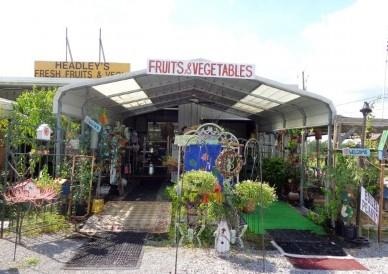
Sustainable Horticultural Crop Production Reactive Program
Evaluation Technique: QR code–based grower impact survey since 2018.
Audience: Despite the continuation of the COVID-19 pandemic in 2021 and along with the federal vaccination program, the horticulture team assessed 30 impact cases that included 29% beginning farmers, 36% experienced producers, 5% nursery and greenhouses, and other clientele that sought direct assistance from regional Extension agents and specialists.
Adoption Rate for Recommendations: 95% among clientele with a 94% highly satisfied rating for team effort.
Crop Savings: 24 producers and nursery owners reported input savings and profitability exceeding $120,000. About 6 producers reported direct crop savings worth more than $607,000 of nursery and specialty crops.
Crop Improvement: Commercial horticulture regional Extension agents’ assistance to producers led to 20% crop improvement and 55% crop savings.
Direct Impact: Estimated $1.3 million.
Return on Investment: 42:1
Intensive COVID-19 Virtual Training Events for Diverse Clientele
The entire Commercial Horticulture Team initiated and participated in weekly and monthly training events to benefit producers that could not attend educational events because of COVID-19 restrictions.
2020 Outputs: In 2020 and 2021, the Commercial Horticulture Team completed 52 and 68 events, respectively. These included in 2020 and 2021 the Alabama Virtual Farm Tours, a monthly webinar series, and Q&A Friday.
Attendance: In 2020, 1,335 direct and 35,387 indirect participants attended 68 online events.
Social Media Growth: Social media (Facebook) membership across three team channels grew 77% with 4,071 followers by the end of the year.
Audience: Demographics included 47% male, 50% female, and 3% others; 84% White, 7% Black, 7% Asian, and 2% Others. Overall online event participation: 25% new audience, 22% beginning farmers, and 10% experienced farmers.
Crop savings: About 125 respondents indicated more than $50,000 gain in crops or savings on inputs.
2021 Outputs: 52 virtual events were completed in a more organized manner by the entire Commercial Horticulture Team, based on 2020 outputs and outcome data.
Attendance: 936 direct and 21,652 indirect participants with 158 questions answered via Facebook Live event (Q&A Friday).
Social Media Growth: 117% growth in three Facebook channels since the pandemic started in 2020.
Audience: 14% beginning farmers; 11% experienced producers; 31% urban, community, and home gardeners; and 10% educators; 65% male, 38% female, 1% others; 86% White, 12% Black, 1% Asian, 1% Others.
Impacts: 95% usefulness of horticulture crop production and pest alert information because it prevents major crop loss and contamination.
Improving Peach Production & Marketing in Alabama
Project Leader: Edgar Vinson
Objectives: (1) evaluation of dormancy-breaking products during season of low chill accumulation, (2) effect of Armillaria root rot (ARR) mitigating strategies on the growth and development of peaches, and (3) use of colored plastic mulches to increase plant growth of ‘MP-29’ rootstock, which is resistant to ARR.
Evaluation of Dormancy-Breaking Products: Dormancy- breaking products hydrogen cyanamide and potassium nitrate penetrant and combinations of penetrant with either hydrogen cyanamide or potassium nitrate were sprayed at two different stages of chill accumulation (70% and 90% chilling) in an orchard of ‘Carolina Gold’ peach, which has a requirement of 1,050 chill hours.
Results: Current results showed that the rest-breaking products overall are more effective if more chilling is received and potassium nitrate can be as effective as hydrogen cyanamide in breaking dormancy. This is important because hydrogen cyanamide is the leading chemical means of alleviating dormancy, but it is sometimes not available. The chemical is also caustic and poses a health risk. Potassium nitrate is a natural fertilizer and safer to use.
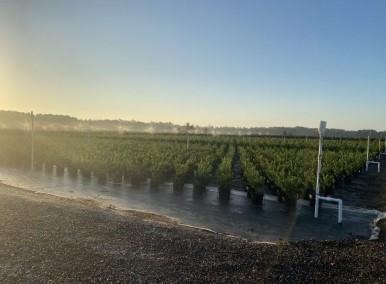
Nursery, Floriculture & Christmas Tree Support
Project Leader: Jeremy Pickens
Background: Nursery, floriculture, and Christmas tree production represent hundreds of crops and several different growing systems. Each is similar but represents different industries. Their problems span horticultural issues (irrigation, fertility, environmental, substrates, plant growth regulators, etc.), disease and
insect pest control, and labor and supply shortages.
Technique: This program supports these industries through applied research and technical assistance.
Project Objectives: Reduce production cost and environmental impact by improving nutrient and water use efficiency in nursery, greenhouse, and Christmas tree farms; reducing pesticide use and off-target application; and reducing labor needs with improved herbicide application.
Outputs:
- Made more than 150 individual contacts through email, text, and phone calls.
- Reached more than 1,300 contacts through email newsletter.
- Helped organize and host a regional meeting (Southern Region International Plant Propagators Society meeting) that included bus tours of nine nurseries in 2 days and 11⁄2 days of educational meetings.
- Produced 1 peer-reviewed fact sheet on weed management in container nurseries.
- Provided 3 recorded webinars.
- Secured $40,000 in support through a specialty crop block grant.
- Awarded $10,000 to research program through Alabama Farmers Federation.
Outcomes:
More than 150 individual contacts supported the industry through fertilizer, pesticide, and other technical assistance. Through email subscriptions (541 individuals), 6 informative updates were sent resulting in a 42% open rate and totaling 1,308 contacts reached. In the nursery industry, a regional meeting (Southern Region International Plant Propagators Society) was organized; 147 industry members participated in 11⁄2 days of workshops and 2 days of bus tours involving 9 nurseries and 3 gardens.
Produce Safety Program
Project Leader: Camila Rodrigues and Kristin Woods
Commercial Horticulture and Food Safety and Quality regional Extension agents and specialists provided training to approximately 3,272 Alabama producers and individuals from supporting industries. Projects are funded by the USDA NIFA Food Safety Outreach Program, USDA AMS Local Food Promotion Program, the FDA Funded Local Food Safety Collaborative, Alabama Department of Agriculture and Industries– Specialty Crop Block Grant Program, and the Southern Region Small Fruit Consortium. Based on 18 impact surveys received, the produce safety program targeted beginning and small fresh produce growers (40%) and community gardener/urban farms (25%) that grow mostly organic crops (50%). Projects focus on improving market access and produce safety:
- Providing basic good agricultural practices information to small direct market growers.
- Helping small and socially disadvantaged growers co-manage food safety and conservation efforts.
- Providing Produce Safety Alliance training for growers to meet federal regulatory requirements.
- Providing classroom training and one-on-one technical assistance to support growers with developing food safety plans to meet buyer requirements.
- Providing educational support to farmers on food safety practices on their farms related to regulatory and industry requirements.
- Improving Extension capacity to help growers with food safety–related market hurdles.
Evaluation Techniques: Event surveys, e-surveys, and impact surveys
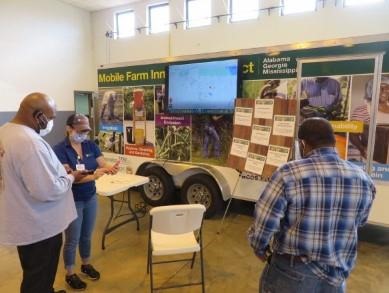
Program Outputs:
- 140 online and in-person events when produce safety information was shared
- 12 peer-reviewed publications
- 20 videos with an average of 200 views per video
- 1 online course providing in-service training to agents and specialists
- 5 newsletter and Internet publications
- 3 new produce safety Extension projects in 2021: Planting for Pollinators, AgWater Safety, adaptive programs for limited vision and limited hearing growers
Program Impact: Based on the event surveys, e-surveys, and impact surveys:
- The adoption rate for food safety practices was 100% among training participants with a significant increase in knowledge gained after training.
- The total amount of savings estimated per farm is around $3,700 for the upcoming year if growers adopt food safety practices on their farms and operations.
- 100% of hands-on workshop attendees report improvements in knowledge and confidence related to implementing produce safety practices.
- In-service training participants showed that 93% gained knowledge, 80% are likely to use the information to help growers, and 88% are more confident that they can help growers navigate market requirements.
Alabama Vegetable IPM Program/High Tunnel Pest Exclusion System Demonstrations (2014 to Present)
This project has established a series of permanent pest exclusion demonstrations using 50% shade cloth as a physical barrier around NRCS-funded high tunnels popular among small farmers.
Project Leader: Ayanava Majumdar Number of Farms: 17 field locations
Adoption Rate for Recommendations: Farmers have used 100% of the IPM recommendations that include the use of microbial insecticides and natural enemy conservation tactics beside pest exclusion systems making this a unique participatory research and evaluation effort.
Grant Funded: Grants have offset $8,163 in the cost of materials (shade cloth).
Crop Success Rate: Crops grown exceed $75,300. Supported by many USDA SARE Professional Development Program and Research and Education grants and ADAI Specialty Crops Block Grants.
Sustainable Crops Educational Programs
Project Leader: Kassie Conner
Target Audience: Growers, homeowners, crop advisers, landscape maintenance industry workers, Alabama Extension personnel, state regulatory agencies, federal regulatory agencies.
Issue/Importance: Accurate pest diagnosis is the first and most critical step in any IPM program. Appropriate IPM recommendations can only be provided when a pest has been properly identified. The Auburn University Plant Diagnostic Lab provides Alabama growers with an unbiased identification of plant problems and management recommendations to protect the health and productivity of plants in Alabama’s agricultural and natural ecosystems.
Project Objectives:
- Resolve issues that arise with growers in Alabama. Issues include plant disease, insect, weed, crop nutrition, environmental, chemical, cultural, and other unpredictable factors. IPM tactics are considered when providing management options for commercial growers. IPM recommendations provided to growers are based on research findings from Alabama and other states in the southeast region.
- Resistance to insecticides and pest management technologies are becoming an increasing problem in agriculture. As a result, the Commercial Horticulture Team encourages the use of all available pest management strategies to ensure the longevity of our resources. The team increases awareness and adoption of IPM recommendations in a variety of cropping systems; documents pest outbreaks and the efficacy of available IPM tools; and develops sustainable pest management strategies for Alabama growers.
Outcomes:
The Auburn University Plant Diagnostic Laboratory processed 11,996 samples during 2021—3,278 of those samples were routine (1,695 plant samples, 1,481 nematode samples, and 102 insect samples). Throughout the year, 1% of clientele are surveyed to determine specific impacts based on recommendations provided through diagnostics. Clients surveyed (n=33) saved an average of $453 per sample by following Extension recommendations. With 3,278 routine plant samples, the laboratory saved clientele $1,484,934. Of the clients surveyed, 96% indicated that they have adopted or plan to adopt the IPM recommendations provided by the laboratory and based on their diagnostics.
Outputs:
In addition to diagnostics preformed, the Sustainable Crops Team published 4 peer-reviewed journal articles and 1 Extension article. The team also conducted 5 proceedings at conferences; developed a learning module for the Farming Basics Course; provided to various groups 14 presentations on disease identification and management; identified 10 first reports for Alabama (6 of which triggered regulatory actions); provided 13 pest alerts for growers and the industry; consulted on 5 regulatory action committees for the Alabama Department of Agriculture and Industries (ADAI); maintained USDA certification for testing of three regulated pathogens of concern in our area to assist USDA, ADAI, and Alabama growers; and assisted in the National Clean Plant Network to provide Alabama citrus growers with clean (disease-free) budwood.
Alabama Fruit & Vegetable Growers Association Annual Conference & Trade Show
Background: The Alabama Fruit and Vegetable Growers Annual Conference and Trade Show is the flagship event for the Extension Commercial Horticulture Team. It is presented jointly with Hunter McBrayer and the Alabama Farmers Federation.
Reach: The November 2021 conference at Gulf State Park and Lodge was a success. About 220 producers, educators, and trade show vendors attended even with ongoing COVID-19 restrictions.
Audience: Based on 192 feedback cards collected from statewide participants, the average experience of conference participants was 16 years. Attendees grew 1,009 acres of vegetables and 960 acres of fruits. Audience: 63% new attendees was the highest level ever. About 31% of conference survey respondents were beginning farmers and 69% were experienced producers (60% male, 40% female).
Overall satisfaction: From the educational sessions, 85% of attendees reported 96% usefulness of information provided by a combination of Alabama Extension and Auburn University researchers and outside guest speakers.
Impact: The event continues to increase in popularity (though COVID-19 disrupted the 2020 event). Since 2015, producers have self-reported more than 90 impact cases. Information about future educational needs has been gathered, compiled, and shared with the Alabama Fruit and Vegetable Growers Association board.
Alabama Green Industry Training Center, Inc. (AGITC) (Professional Services)
Project Leader: John Nabors
Direct Participants (Client Contacts, Class Attendees, Exams): 1,383. Student contacts for high school and college: 224.
Indirect Participants: 4,327 AGITC web page and social media, Facebook, Twitter; 18,556 electronic class In 2021, 38 classes and training events were provided by the AGITC to 579 people. These classes covered state pesticide exam review and preparation; regulatory professional services review; pesticide safety; Worker Protection Standard training; OSHA 10-hour general industry, horticulture, and landscape management content; green industry careers; and landscape equipment demonstrations.
Evaluation Techniques: Participants complete limited surveys and take state-issued exams.
Audience Diversity: Client direct contacts from across Alabama including laborers, small business owners, and corporate management. Social media posts reach past state lines with electronic flyers going worldwide.
Key Project Resources: Alabama Green Industry Training Center and Alabama Certified Landscape Professional websites and Extension publications “Ornamental and Turf Pest Control Manual” (ANR-0796) and “Common Insects and Disease Pests of Turfgrasses and Ornamentals” (ANR-0910) both on the Alabama Extension website.
Source : aces.edu